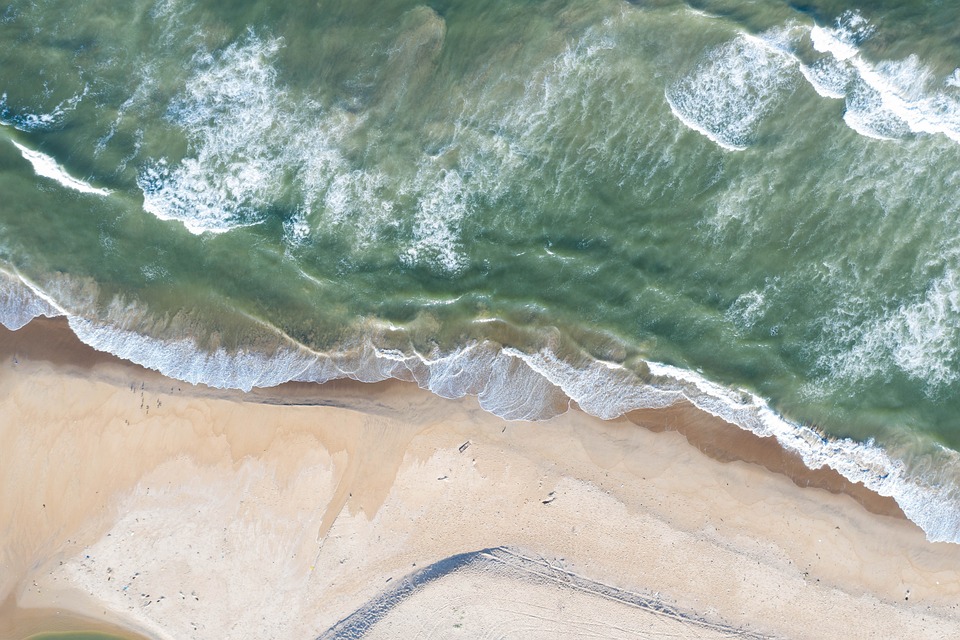Around the World
Navigating the Road Map of the UK: A Comprehensive Guide for Travelers

[ad_1]
Are you planning a trip to the United Kingdom? Navigating the road map of the UK can be a daunting task especially for first-time travelers. This comprehensive guide will help you understand the road map of the UK and provide you with all the essential information you need to make your journey a smooth and enjoyable experience. From understanding the road signs to planning your routes, this guide covers everything you need to know to navigate the UK with ease.
What are the Different Types of Roads in the UK?
The UK road network consists of various types of roads, including motorways, A roads, B roads, and minor roads. Motorways are high-speed roads designed for long-distance travel and are identified by their blue signs with white text. A roads are major roads that connect towns and cities, while B roads are smaller and less busy than A roads. Minor roads are local roads that connect smaller communities and villages.
When planning your journey, it’s important to be aware of the type of roads you will be using, as each type has its own speed limits and regulations. Understanding the different types of roads will help you plan your routes more effectively and ensure a smooth journey throughout your trip.
What are the Road Signs in the UK?
Road signs in the UK are designed to provide drivers with important information and guidance while on the road. There are various types of road signs, including directional signs, warning signs, and regulatory signs. Directional signs are used to indicate the direction of travel, such as motorway exits and town names. Warning signs are used to alert drivers of potential hazards, such as sharp bends or pedestrian crossings. Regulatory signs provide drivers with information about speed limits, parking regulations, and lane usage.
It’s essential to familiarize yourself with the different road signs in the UK to ensure that you understand the rules and regulations while driving. Paying attention to road signs will help you navigate the roads safely and avoid any potential accidents or fines.
How do I Plan my Routes in the UK?
Planning your routes in the UK requires careful consideration of factors such as distance, road type, and traffic conditions. Before embarking on your journey, it’s advisable to use a reliable mapping tool or GPS navigation system to plan your routes and estimate the travel time. Consider the type of roads you will be using and take into account any potential traffic congestion or road closures along your route.
It’s also important to familiarize yourself with the major cities and landmarks along your route to ensure that you don’t miss any important attractions or points of interest. By planning your routes in advance, you can optimize your travel experience and make the most of your time in the UK.
What are the Driving Regulations in the UK?
Driving regulations in the UK are designed to ensure the safety and well-being of all road users. Some essential regulations to be aware of include driving on the left-hand side of the road, adhering to speed limits, and wearing seat belts at all times. It’s also important to be aware of parking regulations, road signs, and the use of mobile phones while driving.
Before driving in the UK, it’s crucial to familiarize yourself with the local driving regulations and ensure that you have the necessary documents and insurance in place. Understanding the driving regulations will help you navigate the roads confidently and ensure a safe and enjoyable journey throughout your trip.
Conclusion
Navigating the road map of the UK can be a seamless experience with the right knowledge and planning. Understanding the different types of roads, road signs, and driving regulations will help you navigate the UK with confidence and ease. By planning your routes in advance and staying informed about the local road network, you can make the most of your travel experience and enjoy everything the UK has to offer.
FAQs
1. What are the speed limits on UK roads?
The speed limits in the UK vary depending on the type of road. Motorways usually have a speed limit of 70mph, while A roads have a limit of 60mph. In built-up areas, the speed limit is typically 30mph unless otherwise indicated. It’s crucial to adhere to these speed limits to ensure the safety of all road users.
2. Do I need a special permit to drive in the UK as a foreign visitor?
If you are visiting the UK as a tourist, you can drive using your foreign driver’s license for up to 12 months. If you are staying in the UK for longer than 12 months, you may need to apply for a UK driver’s license. It’s essential to check the specific regulations that apply to your country of origin before driving in the UK.
3. Can I use my mobile phone while driving in the UK?
It is illegal to use a hand-held mobile phone while driving in the UK. This includes making calls, texting, and using social media. If you need to use your phone while driving, you must use a hands-free device. Using a hand-held mobile phone while driving can result in hefty fines and penalty points on your driver’s license.
4. What should I do if I encounter a road closure or traffic congestion?
If you encounter a road closure or traffic congestion while traveling in the UK, it’s essential to remain calm and follow the instructions of traffic signs and officials. You can use a mapping app or GPS navigation system to find an alternative route and avoid the traffic. It’s also advisable to listen to local radio stations for traffic updates and announcements.
5. Are there any toll roads in the UK?
There are a few toll roads in the UK, including the Dartford Crossing and the M6 Toll. It’s important to be aware of these toll roads and familiarize yourself with the payment methods and regulations. Some toll roads use automated payment systems, while others require cash or card payments at toll booths.
[ad_2]
Around the World
Navigating Your Trip to Orcas Island: A Complete Travel Guide

[ad_1]
Welcome to our complete travel guide on navigating your trip to Orcas Island! In this article, we will discuss the best things to do, places to visit, and tips for making the most of your time on this beautiful island in the Pacific Northwest.
How do I get to Orcas Island?
Getting to Orcas Island is relatively straightforward. The most common way to reach the island is by ferry from Anacortes, Washington. The ferry ride takes about an hour and offers stunning views of the surrounding water and islands. Be sure to check the ferry schedule in advance and plan accordingly, as reservations are recommended during peak travel times.
If you prefer to fly, there is a small airport on Orcas Island with daily flights from Seattle and other nearby cities. Additionally, you can also reach the island by private boat or seaplane, if that is more convenient for you.
Where should I stay on Orcas Island?
Orcas Island offers a variety of accommodation options to suit every traveler’s needs and budget. From cozy bed and breakfasts to luxury resorts, there is something for everyone on the island. If you prefer a more rustic experience, camping is also available at several state parks and campgrounds.
For a unique and memorable stay, consider renting a cabin or vacation home with stunning waterfront views. These accommodations often provide a more private and secluded experience, perfect for those looking to escape the hustle and bustle of everyday life.
What are the top attractions on Orcas Island?
Orcas Island is known for its natural beauty and outdoor activities. One of the top attractions on the island is Moran State Park, which offers hiking trails, lakes for swimming and boating, and stunning views from the summit of Mount Constitution. Whale watching tours are also popular, as the waters surrounding Orcas Island are home to a variety of marine life.
For those interested in history and culture, be sure to visit the Orcas Island Historical Museum and the historic village of Eastsound. The island also has a thriving arts community, with galleries and shops showcasing local artists and artisans.
What are some tips for exploring Orcas Island?
When exploring Orcas Island, be sure to pack comfortable walking shoes and layers, as the weather can be unpredictable. Consider renting a bike or kayak to explore the island at your own pace, or join a guided tour for a more in-depth experience. Be respectful of the island’s natural beauty and wildlife, and follow Leave No Trace principles to help preserve this special place for future generations.
Lastly, be sure to try some of the local cuisine while on Orcas Island. From fresh seafood to farm-to-table fare, the island offers a variety of dining options to suit every palate.
Conclusion
Exploring Orcas Island is a unique and memorable experience that offers something for everyone. Whether you are interested in outdoor activities, history and culture, or simply relaxing and enjoying the stunning scenery, Orcas Island has it all. With careful planning and an open mind, your trip to Orcas Island is sure to be an unforgettable adventure.
FAQs
Is Orcas Island a good destination for families?
Yes, Orcas Island is a great destination for families! With a wide range of outdoor activities, attractions, and accommodation options, there is something for everyone to enjoy.
Are there grocery stores and other amenities on Orcas Island?
Yes, Orcas Island has grocery stores, restaurants, and other amenities to ensure that your stay is comfortable and convenient.
Can I see whales from the shore on Orcas Island?
While it is possible to see whales from the shore on Orcas Island, your best bet for a close encounter with these majestic creatures is to take a whale watching tour.
What is the best time of year to visit Orcas Island?
The best time to visit Orcas Island depends on your preferences. Summer offers warm weather and outdoor activities, while spring and fall are quieter and more affordable. Winter can be chilly, but offers a peaceful and serene experience on the island.
Are there any annual events or festivals on Orcas Island?
Orcas Island hosts a variety of annual events and festivals, including the Orcas Island Film Festival, the Orcas Island Seafood Festival, and the Doe Bay Music Festival. Be sure to check the event calendar when planning your trip!
[ad_2]
Around the World
Grand Circle Travel Files for Chapter 11 Bankruptcy: What This Means for Customers

[ad_1]
A detailed overview of Grand Circle Travel filing for Chapter 11 bankruptcy and its impact on customers. Exploring what this means for travelers who have booked trips with the company and what steps they can take moving forward.
What is Chapter 11 Bankruptcy?
Chapter 11 bankruptcy is a legal process that allows a company to reorganize its debts and assets in order to stay in business. This type of bankruptcy typically involves creating a plan to repay creditors over time while continuing operations. For Grand Circle Travel, filing for Chapter 11 bankruptcy means that they are seeking protection from creditors while they work on restructuring their finances.
Customers who have booked trips with Grand Circle Travel may be concerned about what this means for their upcoming travel plans and the money they have already paid.
How Does This Affect Customers?
Customers who have booked trips with Grand Circle Travel may be uncertain about the status of their upcoming travel plans. With the company filing for Chapter 11 bankruptcy, there is a potential risk of trip cancellations or disruptions. Customers may also be worried about the possibility of losing the money they have already paid for their trips.
It is important for customers to stay informed about the situation and understand their rights and options moving forward. While the company works on restructuring its finances, customers may need to consider alternative travel plans or seek refunds for their bookings.
What Steps Can Customers Take?
Customers who have booked trips with Grand Circle Travel should first contact the company to inquire about the status of their bookings. It is recommended to keep a record of all communication with the company regarding their travel plans.
If customers are concerned about the possibility of trip cancellations or disruptions, they may want to explore alternative travel options or consider purchasing travel insurance to protect their investment. Customers should also review the terms and conditions of their bookings to understand their rights in the event of bankruptcy.
Can Customers Get Refunds?
Customers who have paid for their trips with Grand Circle Travel may be eligible for refunds depending on the situation. If the company cancels a trip due to the bankruptcy filing, customers may be entitled to a refund of the money they have paid.
Customers should review their booking agreements and contact the company to inquire about refund options. It is also advisable to contact credit card companies or travel insurance providers to explore additional avenues for refunds.
What Does the Future Hold?
As Grand Circle Travel works through the Chapter 11 bankruptcy process, the future of the company and its operations remain uncertain. Customers should stay informed about any updates or changes to the company’s status and be prepared for potential impacts on their travel plans.
It is important for customers to monitor the situation closely, consider their options, and take proactive steps to protect their travel investments. By staying informed and being proactive, customers can navigate the uncertainty caused by the bankruptcy filing.
Conclusion
Grand Circle Travel’s filing for Chapter 11 bankruptcy has raised concerns for customers who have booked trips with the company. It is essential for customers to stay informed about the situation, communicate with the company, and explore their options for refunds or alternative travel plans. By understanding their rights and taking proactive steps, customers can navigate the challenges posed by the bankruptcy filing.
FAQs
1. Will I get a refund if my trip is canceled due to Grand Circle Travel’s bankruptcy?
Customers may be eligible for refunds if their trip is canceled due to the bankruptcy filing. It is recommended to review booking agreements and contact the company to inquire about refund options.
2. Should I purchase travel insurance for my upcoming trip with Grand Circle Travel?
Considering the uncertainty surrounding the company’s finances, purchasing travel insurance may provide additional protection for customers in the event of trip cancellations or disruptions. It is advisable to research different insurance options and consider the coverage they provide.
3. What rights do I have as a customer of Grand Circle Travel in light of the bankruptcy filing?
Customers have rights as consumers, and it is important to review booking agreements and terms and conditions to understand these rights. In the event of bankruptcy, customers may be entitled to refunds or alternative accommodations.
4. How can I stay informed about updates regarding Grand Circle Travel’s bankruptcy?
Customers can stay informed by following news updates, contacting the company directly for information, and monitoring official communications from Grand Circle Travel. It is crucial to remain vigilant and proactive in seeking information about the company’s status.
5. What should I do if I am unable to reach Grand Circle Travel for information about my booking?
If customers are having difficulty reaching the company for information about their bookings, they may consider reaching out to credit card companies or travel insurance providers for assistance. It is important to document all communication attempts and seek guidance from relevant sources.
[ad_2]
Around the World
Discover the Beauty of the West Coast: Your Ultimate National Parks Road Trip Itinerary

[ad_1]
Welcome to your ultimate guide to exploring the stunning beauty of the West Coast through a national parks road trip itinerary. From towering redwoods to enchanting waterfalls, this journey will take you through some of the most iconic and picturesque parks in the United States. Buckle up and get ready to embark on an adventure filled with nature, wildlife, and unforgettable landscapes.
What national parks are included in this road trip itinerary?
On this road trip, you will have the opportunity to visit several breathtaking national parks along the West Coast. Some of the highlights include Yosemite National Park, Sequoia National Park, Kings Canyon National Park, Joshua Tree National Park, and Redwood National and State Parks. Each park offers its own unique beauty and outdoor adventures, making this itinerary a diverse and exciting experience.
At Yosemite National Park, you can marvel at the towering granite cliffs of El Capitan and Half Dome, as well as the cascading waterfalls of Yosemite Valley. Sequoia and Kings Canyon National Parks are home to the largest trees on Earth, the giant sequoias, which stand majestically against the backdrop of the Sierra Nevada mountains. Joshua Tree National Park features rugged rock formations and distinctive Joshua trees, while Redwood National and State Parks are a haven for ancient coast redwoods and lush forests.
What activities can you enjoy in these national parks?
During your road trip through the national parks of the West Coast, you can partake in a variety of outdoor activities that showcase the natural beauty of each destination. Hiking trails of varying difficulty levels offer the chance to explore scenic landscapes, discover hidden waterfalls, and witness wildlife in their natural habitats.
You can also enjoy camping under the stars, stargazing in designated dark sky areas, and taking scenic drives that offer panoramic views of the parks. For the more adventurous traveler, rock climbing, horseback riding, and kayaking opportunities are available in certain parks. Be sure to pack your hiking boots, camera, and sense of adventure for an unforgettable experience.
How long does this road trip itinerary take to complete?
The length of this national parks road trip itinerary can vary depending on how much time you have to spare and how many parks you wish to visit. Ideally, you should allow at least two weeks to fully immerse yourself in the beauty of the West Coast and explore each park at a leisurely pace.
This allows for ample time to hike, camp, and experience the unique attractions of each park without feeling rushed. However, if you are short on time, it is possible to condense the itinerary and visit select parks over a long weekend or a week-long vacation. Regardless of how much time you have, this road trip promises to be a memorable and awe-inspiring journey.
What is the best time of year to embark on this road trip?
The best time to embark on this national parks road trip itinerary is in the spring or fall when the weather is mild, and the parks are less crowded. Spring brings blooming wildflowers, rushing waterfalls, and vibrant greenery, while fall showcases the changing colors of the foliage and cooler temperatures.
Summer can be a popular time to visit the parks, but be prepared for larger crowds and warmer temperatures. Winter offers the opportunity to experience the parks blanketed in snow, but some areas may be inaccessible due to seasonal road closures. Ultimately, the best time to visit the West Coast national parks is when you are able to appreciate the beauty of nature in your own way.
Conclusion
Embarking on a national parks road trip along the West Coast is a once-in-a-lifetime experience that allows you to discover the stunning beauty of some of America’s most cherished landscapes. From towering sequoias to rugged desert terrain, each park offers a unique and unforgettable outdoor adventure that will leave you in awe of the natural world.
Whether you are an avid hiker, wildlife enthusiast, or simply someone who appreciates the beauty of nature, this road trip itinerary has something for everyone. So pack your bags, hit the open road, and get ready to create lasting memories in the great outdoors.
FAQs
1. Can I visit all the national parks in one trip?
While it is possible to visit all the national parks included in this road trip itinerary, it may require ample time and careful planning due to the distance between some of the parks. If time is limited, consider prioritizing select parks that align with your interests and travel goals.
2. Are the national parks pet-friendly?
Some national parks along the West Coast are pet-friendly, allowing leashed pets on designated trails and campgrounds. However, be sure to check the park’s regulations and guidelines regarding pets beforehand to ensure a safe and enjoyable visit for you and your furry friend.
3. What should I pack for a national parks road trip?
When embarking on a national parks road trip, it is essential to pack hiking essentials such as sturdy footwear, breathable clothing, a daypack with snacks and water, sunscreen, a first aid kit, and a map or GPS device. Additionally, bring camping gear if planning to stay overnight in the parks.
4. Are there entrance fees for the national parks?
Most national parks along the West Coast require an entrance fee for visitors, which helps support park maintenance and conservation efforts. Check the National Park Service website for current entrance fees, annual pass options, and fee-free days throughout the year.
5. Can I make campground reservations in advance?
Many national parks offer campground reservations in advance through the park’s website or a designated reservation system. Due to the popularity of certain parks, especially during peak seasons, it is recommended to make campground reservations as early as possible to secure your spot.
[ad_2]
-

 Around the World9 months ago
Around the World9 months agoSmooth Sailing: A Complete Guide to Taking the Ferry from Montreal to Quebec City
-

 Around the World9 months ago
Around the World9 months agoDiscover the Best Tips and Advice for Traveling to St John USVI: A Must-Read Forum for Travelers
-

 Thing To Do9 months ago
Thing To Do9 months agoThe Ultimate Guide to Exploring Route 81 in Virginia: Must-See Attractions and Hidden Gems
-
Around the World11 months ago
The Ultimate Florida Road Trip: A Drive from Fort Lauderdale to Key West
-

 Around the World9 months ago
Around the World9 months agoExploring the Hidden World of Cabo San Lucas Red Light District
-

 popular11 months ago
popular11 months agoExplore Winfield, Kansas: A Guide to The Best Things to See and Do
-

 Beaches11 months ago
Beaches11 months agoUncovering the Hidden Gem: Exploring Pine Island’s Beautiful Beach
-

 Around the World11 months ago
Around the World11 months agoIs It Too Cold to Swim in Bermuda in April? All You Need to Know


















